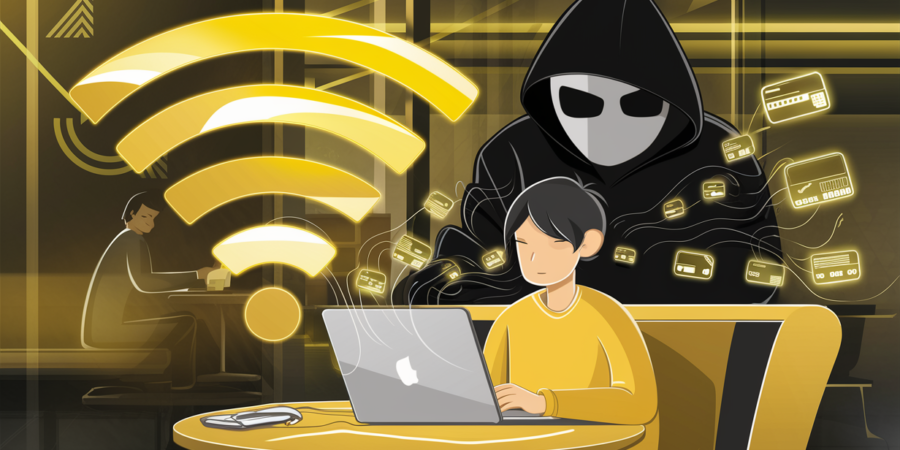Introduction: Why Free Wi-Fi Feels So Tempting
Imagine this: you’re at a cafe, airport, or mall. You open your phone, and there it is a “Free Wi-Fi.”
No password, no charges, just one tap to connect. It feels like a blessing in today’s data-hungry world.
But behind that free access could be a trap waiting to steal your data, identity, or even money.
In 2025, where cybercriminals have grown smarter and faster, free Wi-Fi has become one of their favorite playgrounds.
The truth is simple — what looks free often comes with hidden costs.
The Hidden Dangers of Free Wi-Fi
1. Man-in-the-Middle (MITM) Attacks
When you connect to public Wi-Fi, hackers can secretly place themselves between you and the internet.
Every message, email, or banking transaction passes through their hands first.
Real-Life Scenario: In 2023, a student at a university library in Delhi connected to free Wi-Fi.
Minutes later, their social media accounts were hacked, and personal photos were leaked.
The attacker had been intercepting their login details using a MITM attack.
2. Fake Wi-Fi Hotspots
Hackers often set up look-alike Wi-Fi networks with names like “Free_Airport_WiFi” or “Cafe_Guest.”
Once you connect, everything you do online is visible to them.
Real-Life Scenario: At an airport in London, multiple travelers lost access to their email accounts after connecting to
what seemed like official Wi-Fi. Later, it was revealed that cybercriminals had set up a fake hotspot with the same name
as the airport network.
3. Data Theft and Identity Exposure
Free Wi-Fi networks are usually unsecured. That means your private data—credit card numbers, passwords, emails—travels
without proper protection. Hackers can easily capture it.
Real-Life Scenario: In Mumbai, a working professional unknowingly entered her bank login on public Wi-Fi.
Within hours, ₹50,000 was withdrawn from her account. The network had no encryption, and her details were stolen.
4. Malware Injection
Hackers can inject malware into your device through unsecured Wi-Fi. This malware can later spy on your keystrokes,
lock your files (ransomware), or even track your location.
Real-Life Scenario: A college student in Surat used free Wi-Fi at a gaming café. Later, their phone was flooded with ads,
and files were encrypted by ransomware demanding money.
Why Do Hackers Love Free Wi-Fi?
- It’s easy to set traps.
- People trust public places like airports, cafes, and malls.
- Most users connect without thinking about security.
- Huge volume of victims at once.
How to Stay Safe on Free Wi-Fi
- Use a VPN (Virtual Private Network): Encrypts your traffic, making it unreadable to hackers.
- Verify the Network: Always confirm the official Wi-Fi name with staff or signage.
- Avoid Banking or Shopping: Never use banking or UPI apps on free Wi-Fi.
- Enable Two-Factor Authentication (2FA): Protects accounts even if passwords are stolen.
- Turn Off Auto-Connect: Prevents devices from auto-joining rogue hotspots.
- Use Your Mobile Hotspot: Personal hotspot is far safer than public Wi-Fi.
What to Do If You Suspect You’ve Been Hacked on Free Wi-Fi
- Disconnect Immediately from the Wi-Fi network.
- Change Passwords of all important accounts.
- Check for Malware using antivirus or anti-malware software.
- Enable Account Alerts for suspicious activity.
- Report Unauthorized Transactions to your bank immediately.
Final Thoughts: Think Before You Connect
Free Wi-Fi may seem harmless, but in reality, it’s one of the easiest doors for hackers to enter your life.
A single careless click can cost you your identity, money, and peace of mind.
The next time you see “Free Wi-Fi Available” at a cafe or airport, pause and ask yourself: “Is my data worth more than a few MBs of free internet?”
Stay aware, stay secure, and remember: in the digital world, nothing is truly free.
Visit Cybersense : Website | Instagram | LinkedIn | Facebook

